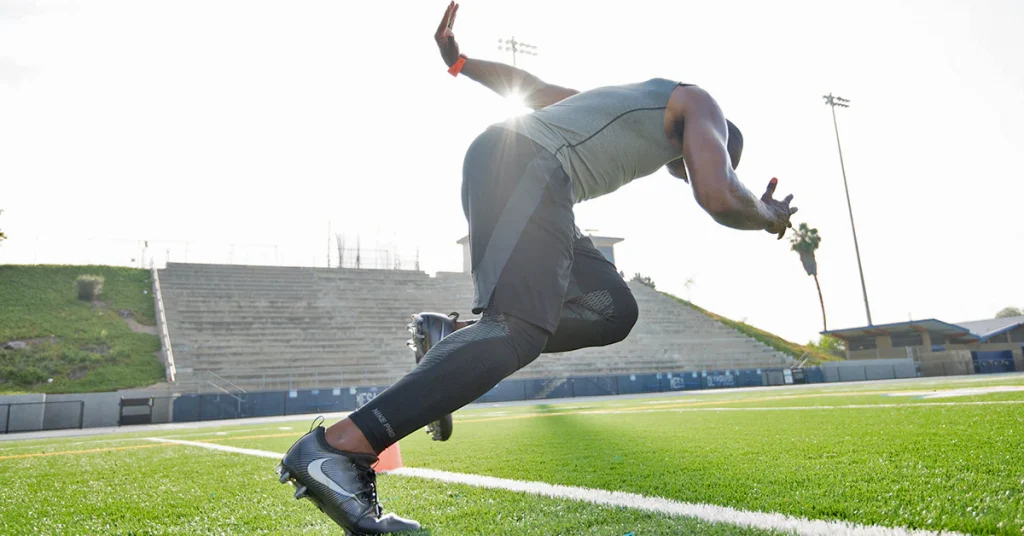
The 40-yard dash is more than a test of speed—it’s a test of technical execution under pressure. While much attention is given to sprint mechanics, one of the most critical components is the stance. The start determines how effectively force is applied, how quickly an athlete accelerates, and whether they carry momentum efficiently through the sprint.
Why the Stance Matters
The stance sets the tone for the entire 40-yard dash. A poorly set stance—regardless of the athlete’s speed capacity—leads to wasted movement, slower reaction, and inefficient first steps.
An effective stance helps:
- Preload the muscles for explosive output
- Position the center of mass for horizontal drive
- Create tension and stability for rapid movement
- Set up a clean, forceful first step
Key Elements of a Proper Stance
- Foot Placement
- Front foot 1.5–2 foot lengths behind the line
- Back foot staggered behind (approx. 2 feet behind front foot)
- Feet should feel balanced—not flat, not up on toes entirely
- Hand Position
- Lead hand down just behind the line (opposite of front foot)
- Fingers spread for a stable base
- Off-hand loaded and ready to drive with the first step
- Hip and Torso Angle
- Hips slightly higher than shoulders to encourage horizontal drive
- Torso angle aligned with the shin of the front leg
- Chin tucked, eyes down to keep the spine neutral
- Weight Distribution
- Roughly 60–70% of weight on the front foot
- Hips and shoulders coiled to release tension explosively
- Avoid rocking—there should be stillness before the burst
- Mental Cueing
- “Push and punch” – push off the ground and punch the opposite arm
- “Low, long, and loaded” – stay low, take a long first step, and be loaded with tension
Training the Stance
Athletes should not only practice the stance regularly, but also incorporate:
- Isometric start holds (to engrain position and control)
- Video feedback to fine-tune angles and setup
- Band-resisted starts to build tension and force production
- Positional drills focused on explosiveness from a still start
The Takeaway
The 40-yard dash is often won or lost in the first 5 yards. A technically sound stance is not just helpful—it’s essential. It builds the foundation for an explosive, efficient sprint and allows the athlete to express their full speed potential.
Sources
- Clark, K. P., & Weyand, P. G. (2014). Are running speeds maximized with simple-spring stance mechanics? Journal of Applied Physiology, 117(6), 604–615.
- Mann, R. V. (2013). The Mechanics of Sprinting and Hurdling. CreateSpace Independent Publishing.
- Breen, D., et al. (2018). The effect of stance width on sprint start performance. Journal of Strength and Conditioning Research, 32(7), 2006–2013.
- Smirniotou, A., Katsikas, C., & Paradisis, G. (2008). The effect of performance level on sprint start and acceleration. New Studies in Athletics, 23(2), 19–27.
Leave a Reply